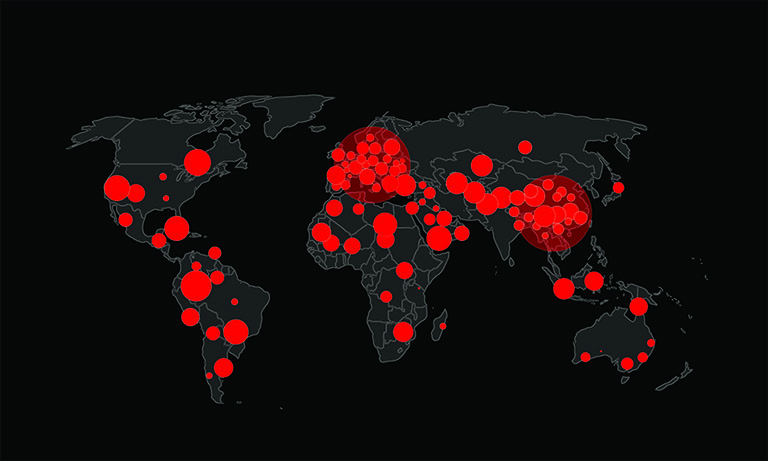Bank Of Scotland Email Scam Makes Use of Legitimate Institutions to Trick You

Phishing scams are becoming increasingly sophisticated, with fraudsters constantly refining their tactics to trick unsuspecting users into sharing sensitive information. The Bank of Scotland Email Scam is one such deceptive attempt, cleverly disguised as an official communication promising compensation. Here's how the scam works and what you can do to protect yourself.
Table of Contents
The Scam at a Glance
The Bank of Scotland Email Scam is a phishing campaign that targets recipients with a fraudulent email claiming they are entitled to a large sum of money. Typically, the subject line reads something like "Compensation Payment Of $5.5 Million U.S.D," although the exact wording can vary. The email's content falsely asserts that the recipient has a right to receive compensation through the Bank of Scotland as part of a government settlement aimed at combatting financial fraud and scams.
What makes this scam particularly deceptive is the use of names from legitimate institutions like the Bank of Scotland and the World Bank, suggesting that these entities are involved in facilitating the compensation process. However, it is critical to understand that neither the Bank of Scotland nor any other legitimate organization is associated with this scam.
Check out the fraudulent message below:
Subject: Compensation Payment Of $5.5 Million U.S.D
BANK OF SCOTLAND PLC UNITED KINGDOM.
PO Box 23581, Edinburgh, EH1 1WH.
PHONE: +44 7767 966585
GREETINGS, BENEFICIARY,
I Must Say That I Have Enormous Respect For You Considering The Manner In Which I Have Made Contact With You.
I Am Stan Stevenson, The Foreign Remittance Manager, Bank of Scotland.
We Have Been Instructed This Day By The Concerned Authority To Have Your Fund’s Release-Protocol Completed, Contrarily, The Fund Will Be Declared Unserviceable By The Bank.
Kindly Note That This Funds Were Generated By The United States Government From The World Bank, Due To The Rate Of Deceptions Out There In The World, The United States Governments Have Filed A Case Against Some Countries Government And All Other Individuals Involving In Scam Activities, After The Case Has Been Taken To Court, The Law Court Gave Orders That Those Countries' Government And All Individuals To Release The Total Sum Of Two Billion United States Dollars Only Which Was Tagged Unclaimed Fund.Thereafter The Funds Have Been Released From The World Bank To the Bank of Scotland, To Have The Fund Release With An Immediate Effect, The United States Governments Has Chosen Bank of Scotland To Inform The Rightful Beneficiary, And Your Name And Email Address Was Also Found On Our List.
The Time Frame Is Very Short And Technically, Hand Delivery Is The Fastest Means Of Getting This Done, So We Have Reverted To Status Through Means Of United Nations Courier Service.
This ($5,500,000.00) Which Is On Your Name, Can Only Be Delivered To You Via Hand-To-Hand Delivery.
To This End We Request You To Reconfirm Below Information To Ensure Accurate Delivery Of Your Fund
Full Names:
Address:
Phone:
Nearest Airport:
Age:
Country:
Occupation:
Your Reference Code Is: (Bs/Un/Fnd/0702)
Please Remember To State It As A Subject When Contacting Us And Your Fund Will Be Delivered Within The 48 Working Hours.
Therefore Forward Your Details To This Email: managerofficialstanstevenson@gmail.com
MR. Stan Stevenson
FOREIGN REMITTANCE MANAGER,
BANK OF SCOTLAND PLC UK
False Promises of Compensation
According to the scam email, the compensation stems from a court settlement in which the U.S. government allegedly sued various countries for not preventing financial fraud. Supposedly, a portion of the settlement—amounting to $5.5 million per individual—has been released to victims of economic crimes, with the funds being distributed through the Bank of Scotland.
The email also claims that the recipient's compensation will be delivered directly to them, reinforcing the illusion of legitimacy. This supposed hand-to-hand delivery is a tactic designed to convince the recipient that the offer is trustworthy and exclusive. However, this is entirely fabricated, and no such settlement or compensation exists.
The Dangers of Sharing Personal Information
At the core of the Bank of Scotland Email Scam is the solicitation of sensitive personal information. Recipients are instructed to provide details such as their full name, age, occupation, country of residence, address, nearest airport, and telephone number. These types of requests are typical in phishing scams, as cybercriminals can exploit the information for various forms of identity theft or financial fraud.
Once this data is in the hands of the scammers, it may be sold on the dark web, used to open fraudulent accounts, or leveraged to launch further attacks against the victim. If you have already provided any personal or financial information in response to such an email, it is crucial to report the situation to relevant authorities as soon as possible to mitigate the potential damage.
Recognizing Common Phishing Techniques
Phishing emails, including the Bank of Scotland scam, often share several characteristics. While many assume that phishing emails are poorly written or full of errors, this is not always the case. Some scams are carefully crafted to appear professional and credible, making them more difficult to detect.
In this particular scam, the fraudulent email goes to great lengths to mimic the style and language of official communications. By dropping the names of well-known institutions and providing a backstory about a supposed legal settlement, the scammers aim to build trust and convince victims that the message is authentic.
Malware and Phishing: A Dangerous Combination
Beyond stealing personal information, phishing emails can also serve as a delivery mechanism for malware. This can occur when the scam email includes an attachment or a link to a harmful webpage. Common file types used in these attacks include:
- ZIP or RAR archives.
- Executable files.
- Even seemingly harmless documents like Microsoft Word or PDF files.
When you open the malicious file, the malware can begin to infiltrate the victim's system. In some cases, additional steps are required from the user, such as enabling macros in an Office document, which then triggers the infection. Malware can range from simple spyware to more dangerous ransomware, which locks the user out of their files and demands a ransom payment.
Protecting Yourself from Phishing and Malware Attacks
To avoid phishing scams like the Bank of Scotland Email Scam, it's important to exercise caution when handling unsolicited emails. If you receive a message that promises financial compensation or requests personal information, be skeptical. Legitimate organizations will never ask for sensitive details via email, and they won't distribute funds in the manner described in the scam.
Additionally, avoid opening attachments or clicking links in emails that seem suspicious or irrelevant. If you have any doubts about an email's authenticity, contact the supposed sender directly through official channels to verify its legitimacy.
Bottom Line
Phishing scams are just one of many threats that exist online. Fraudulent websites, fake software updates, and other malicious content can also pose risks. Always be careful when downloading files from the internet, and ensure that you use legitimate software from trusted sources. Keeping your software and security programs up to date is another essential step in protecting yourself from cyber threats.
The Bank of Scotland Email Scam reminds us of the importance of staying vigilant while browsing the internet and managing your inbox. By recognizing the warning signs of phishing scams and following best practices for online safety, you can protect your personal information and avoid becoming a victim of cybercrime.








